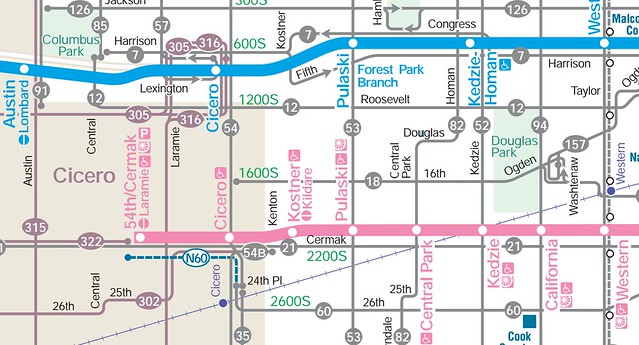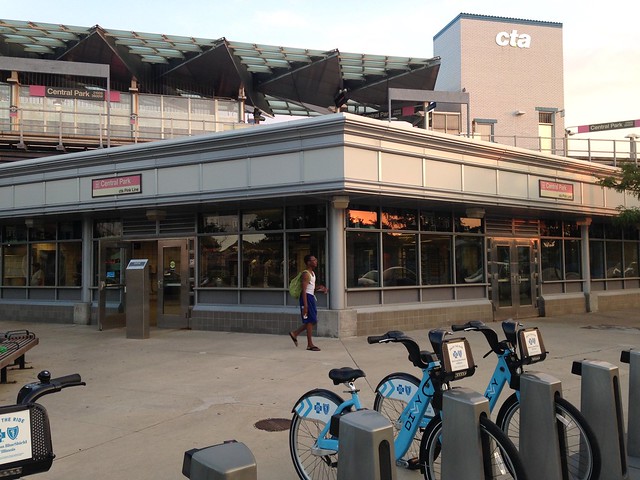
[Last year the Chicago Reader launched a weekly transportation column written by Streetsblog Chicago editor John Greenfield. This partnership allows Streetsblog to extend the reach of our livable streets advocacy. We syndicate a portion of the column after it comes out online; you can read the remainder on the Reader’s website or in print. The paper hits the streets on Thursdays.]
In the second half of the 20th century, the North Lawndale community area on Chicago's west side was devastated by redlining and other racist lending practices that led to civil unrest among the neighborhood's by then booming black population. Fifty years ago this summer, Martin Luther King Jr. moved his family to an apartment in the neighborhood to highlight the need for fair housing and other improvements in black areas of northern cities.
North Lawndale never recovered economically from the disinvestment and social upheavals of the last 50 years. The area's population plummeted from a high of 124,937 in 1960 to 35,623 in 2014. According to the U.S. Census, the median household income is currently $25,797, far below the city average of $47,408.
In April the North Lawndale Community Coordinating Council and others launched the neighborhood's first comprehensive plan since 1958, covering infrastructure, housing, economic development, transit, and more. Last week, the council hosted a panel discussion that featured a pair of speakers, Cynthia Hudson from the Active Transportation Alliance and Michael LaFargue from the Red Line Extension Coalition, to discuss possible transit improvements in North Lawndale and share best practices from transit advocacy elsewhere in the city. Read a separate post about LaFargue's advocacy efforts here.
The area—bounded roughly by Taylor Street, Kenton Avenue, Metra's BNSF Line, and Campbell Avenue—has four CTA Pink Line stations. The Blue and Green Lines aren't far away. But community leaders say further improving public transportation access is key in creating more opportunities for residents. Specifically, NLCCC members argue that restoring bus service on Ogden Avenue and other corridors would be a shot in the arm for the struggling neighborhood.

Ogden, a major arterial street that runs southwest from downtown and through North Lawndale, is a priority for residents because CTA buses used to travel down the avenue all the way to Pulaski Road, well into the heart of the neighborhood. But in 2008 the Ogden bus line was truncated due to low ridership on its western leg.
The route now extends only as far southwest as California Avenue, a mile and a half east of Pulaski, by Mount Sinai Hospital. (The line was eventually merged with the #157 Streeterville/Taylor route, which provides northeastbound service from Mount Sinai to the area near Northwestern Memorial Hospital on weekdays only, from the early morning to the early evening.)
"We're not professional transportation people, but we do have a love and passion for our community," said Valerie Leonard, a community development consultant present at last week's forum. "We want to make sure that transit is accessible and affordable. People have said, 'Some jobs I can't take because of the way the buses run.'"
Meeting attendee Gussie Dye, a retired nurse who's lived in the neighborhood since 1959, said she used to ride the Ogden bus to classes at Malcolm X College and UIC, and to her job at the VA Medical Center. Now, instead of having a direct bus route to appointments at Northwestern, she walks to the Kedzie bus and rides north to Chicago Avenue, then catches another bus east to Streeterville—a much longer trip.
"I would like to know what action needs to be taken to get [Ogden service] restored," she said.
"We know a lot of people who want to see service restored on Ogden," said Hudson, an Active Transportation Alliance community liaison who also lives in North Lawndale. "We can start right away with a petition."
Read the rest of this article on the Chicago Reader website.




